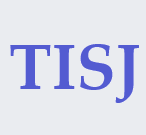Peer-Review Policy
Process
Submission
Submission to the Top Italian Scientists Journal (TISJ) is implemented by sending the article in a pdf format to editors@topitalianscientists.org. You will receive an email confirming your request.
Pre-check
New submissions are initially checked with regards originality, suitability, structure and formatting, conflicts of interest, background of authors, etc. Poorly prepared manuscripts may be rejected at this stage.
Also, the new article must meet all ethical requirements as outlined in Publication Ethics and Publication Misconduct Statement.
If the manuscript does not meet one or more of these requirements, we will return it for further revisions to you or decline to consider your study for publication.
Once your manuscript has passed the initial checks, it will be assigned to a Reviewer who is expert in that area, it is important to state in which area the article will be published as described in the Aims and Scope section of the About the Journal.
In a case of a conflict of interest, the article will be assigned to the Editor-in-Chief.
Peer review
TISJ operates a single-blind review process, which means that reviewers know the names of authors, but the names of the reviewers are hidden from the authors. The scientific quality of the research described in the manuscript is assessed by an independent expert reviewer. The Editor-in-Chief is responsible for the final decision regarding acceptance or rejection of the manuscript.
Decisions
The article will be judged on scientific soundness only, not on its perceived impact as judged by the Reviewer. There are three possible decisions:
- Accept (your study satisfies all publication criteria);
- Invitation to Revise (more work is required to satisfy all criteria);
- Reject (your study fails to satisfy key criteria and it is highly unlikely that further work can address its shortcomings).
All of the following publication criteria must be fulfilled to enable your article to be accepted for publication:
Originality The study reports original research and conclusions.
Data availability All data to support the conclusions either have been provided or are otherwise publicly available.
Statistics All data have been analysed through appropriate statistical tests and these are clearly defined.
Methods The methods are described in sufficient detail to be replicated.
Citations Previous work has been appropriately acknowledged.
Interpretation The conclusions are a reasonable extension of the results.
Ethics The study design, data presentation, and writing style comply with our Editorial Policies.
